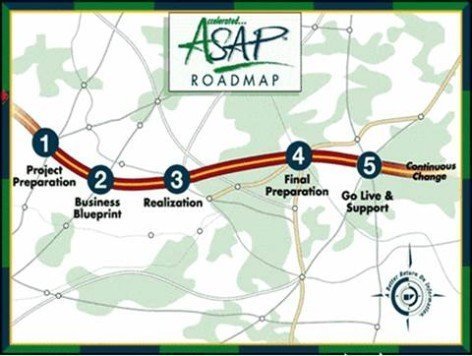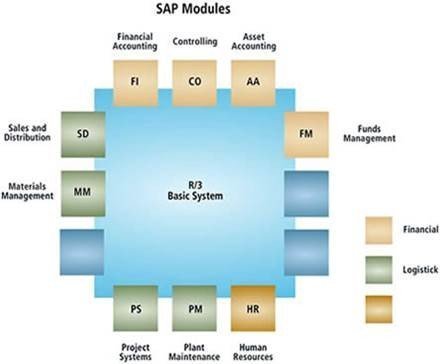SAP S/4HANA Finance 1809 Training
The course will prepare the students to learn the end to end configuration and End-user processes in SAP S/4HANA Finance.
The course will teach the students about new integration of FI and CO, Business Partner concept, new Asset Accounting, Ledger concept with Accounting principles and deleted or obsolete transactions with the new ones.
After taking this course, the students will be able to pass the certification exam, job interviews and work into SAP S/4HANA Finance projects.
| Section 1 | SAP S/4HANA Finance and SAP FIORI |
| Lecture 1 | Overview of the Course |
| Lecture 2 | Product Portfolio of SAP S/4HANA |
| Lecture 3 | Introduction to SAP S/4HANA Finance |
| Lecture 4 | Introduction to SAP FIORI |
| Section 2 | SAP GUI and Navigation |
| Lecture 5 | SAP GUI |
| Lecture 6 | SAP Navigation |
| Section 3 | Enterprise Structure |
| Lecture 7 | Organizational Units / Enterprise Structure |
| Lecture 8 | Variant Principle |
| Lecture 9 | Fiscal Year (with Shortened Fiscal Year) |
| Lecture 10 | Posting Periods Variant (Open and Close Posting Periods) |
| Lecture 11 | Currencies |
| Lecture 12 | Maintain Controlling Area |
| Section 4 | GL & Cost Element Master Data |
| Lecture 13 | Master Data |
| Lecture 14 | General Ledger Accounts (Master Records) |
| Lecture 15 | Operative or Company Code Chart of Accounts |
| Lecture 16 | Group Chart of Accounts (Consolidated Financial Statements) |
| Lecture 17 | Country Chart of Accounts |
| Lecture 18 | Account Group / Field Status |
| Lecture 19 | Define Retained Earnings |
| Lecture 20 | Field Status Variant/Group for GL Accounts |
| Lecture 21 | Creation of Cost Element |
| Lecture 22 | Creation of GL Accounts (2 Segments: Chart of Account Segment and Company Code Segment) |
| Lecture 23 | Creation of GL Master through SAP FIORI app |
| Section 5 | Business Partner, Customer and Vendor Master |
| Lecture 24 | Business Partner Master Data (End User) |
| Lecture 25 | Customer Master Data (End User) |
| Lecture 26 | Vendor Master Data (End User) |
| Lecture 27 | Business Partner and Customer/Vendor Master (Configuration & End User) |
| Lecture 28 | One-time Customer/Vendor and BP Master (Configuration & End User) |
| Lecture 29 | Creation of Customer or Vendor Directly |
| Lecture 30 | Tables for BP, Customer and Vendor |
| Lecture 31 | Creation of BP/Customer/Vendor through SAP FIORI app |
| Section 6 | Bank Master Data |
| Lecture 32 | Bank Master Data |
| Lecture 33 | SAP FIORI Bank Master Data Creation |
| Section 7 | Document Structure in SAP S/4HANA |
| Lecture 34 | Header Level – Document Type, Number Ranges, Account types |
| Lecture 35 | Item Level – Posting Keys, Field Status |
| Section 8 | Document Posting in SAP S/4HANA Finance |
| Lecture 36 | G/L Document Posting, Document Display, Display/Change Line Items and Display Balances |
| Lecture 37 | Accounts Receivable Invoice, Document Display, Display/Change Line Items and Display Balances |
| Lecture 38 | Accounts Payable Invoice, Document Display, Display/Change Line Items and Display Balances |
| Lecture 39 | Customer/Vendor Credit Memo |
| Lecture 40 | One-time Customer/Vendor, Document Display, Display/Change Line Items and Display Balances |
| Lecture 41 | Creation of GL posting, AR & AP posting and Line items through SAP FIORI app |
| Lecture 42 | Posting Period Variant (End-User) |
| Lecture 43 | Materials Management View on Company Codes |
| Lecture 44 | Posting Authorizations |
| Lecture 45 | Definition and Assignment of Tolerance Groups to Users/Employees |
| Lecture 46 | Customization for Line items Layout and Screen Variant for Line Item Display and Reporting |
| Section 9 | Document Posting and Changes Control in SAP S/4HANA Finance |
| Lecture 47 | Posting Control – Default Values: Document Type and Posting Key |
| Lecture 48 | Document Changes: Document Change Control |
| Section 10 | Document Reversal |
| Lecture 49 | Normal Reverse Posting |
| Lecture 50 | Negative Reverse Posting |
| Section 11 | Payment Terms and Cash Discount |
| Lecture 51 | Payment Terms and Cash Discount |
| Section 12 | Document Clearing, Exchange Rate Differences, Taxes |
| Lecture 52 | Post with Clearing – Incoming and Outgoing Payments (Cash Discount) |
| Lecture 53 | Account Clearing – Credit Memo |
| Lecture 54 | Exchange Rate Differences |
| Lecture 55 | Taxes (Input tax and Output tax) |
| Lecture 56 | Document Clearing through SAP FIORI app |
| Section 13 | Clearing – Payment Differences |
| Lecture 57 | Payment Differences – Partial Payment and Residual Items |
| Lecture 58 | Tolerance Groups (G/L, Customers/Vendors) |
| Lecture 59 | Reset Cleared Items |
| Section 14 | Special G/L Transactions |
| Lecture 60 | Configuration of Special G/L Transactions |
| Lecture 61 | Down Payment Received |
| Lecture 62 | Down Payment Made |
| Section 15 | Cash journal (Bank Accounting) |
| Lecture 63 | Cash Journal Configuration |
| Lecture 64 | Cash Journal Transaction |
| Section 16 | Parking and Holding Documents |
| Lecture 65 | Basics of Document Parking Versus Hold Document |
| Lecture 66 | Parking Documents and Processing Parked Document |
| Section 17 | Validations and Substitutions |
| Lecture 67 | Validations and Substitutions |
| Section 18 | Automatic Payment Program – Periodic Processing |
| Lecture 68 | Payment Run – Overview |
| Lecture 69 | Payment Program Configuration |
| Lecture 70 | Running the Payment Program |
| Lecture 71 | Edit the Payment Proposal |
| Lecture 72 | Debit Balance Check |
| Lecture 73 | APP through SAP FIORI app |
| Section 19 | Automatic Dunning Program – Periodic Processing |
| Lecture 74 | Dunning Run – Overview |
| Lecture 75 | Dunning Program Configuration |
| Lecture 76 | The Dunning Run |
| Lecture 77 | Edit the Dunning Proposals |
| Lecture 78 | Printing Dunning Notices |
| Lecture 79 | Dunning through SAP FIORI app |
| Section 20 | Correspondence – Periodic Processing |
| Lecture 80 | Correspondence – Overview |
| Lecture 81 | Correspondence (Configuration and End User) |
| Lecture 82 | Correspondence through SAP FIORI app |
| Section 21 | Reports and Financial Statement Version |
| Lecture 83 | Standard Reports in General Ledger Accounting, Accounts Receivable and Accounts Payable, Balance Sheet and Profit & Loss Statement |
| Lecture 84 | Financial Statement Version |
| Lecture 85 | Reports and FSV through SAP FIORI app |
| Section 22 | SAP HANA Database Native Capabilities in SAP S/4HANA Finance |
| Lecture 86 | SAP HANA Native Capabilities in SAP S/4HANA Finance |
| Lecture 87 | OLTP and OLAP in SAP S/4HANA |
| Lecture 88 | Simplification and Compatibility Views |
| Lecture 89 | Universal Journal – ACDOCA |
| Section 23 | Ledger Configuration with Accounting Principles |
| Lecture 90 | Currency Settings for Company Code |
| Lecture 91 | Ledger Configuration with Accounting Principles |
| Lecture 92 | Non-Leading Configuration with Accounting Principles |
| Lecture 93 | Appendix Ledger Configuration with Accounting Principles |
| Lecture 94 | Benefits of Ledger Approach |
| Lecture 95 | Define Ledger for Version 0 in Controlling |
| Lecture 96 | Default Ledger Group for CO postings |
| Section 24 | Controlling / Management Accounting |
| Lecture 97 | Maintain Controlling Area |
| Section 25 | Integration of FI and CO – General Ledger & Cost Element Master Data |
| Lecture 98 | Default Account Assignment for Cost Center |
| Lecture 99 | Cost Element Group |
| Section 26 | Integration of CO and FI |
| Lecture 100 | Reconciliation Ledger |
| Lecture 101 | Posting CO Documents to FI |
| Lecture 102 | Intercompany Clearing Account |
| Section 27 | Cost Centre Accounting (Master Data) |
| Lecture 103 | Creation of Cost Centers through Easy Access and SAP FIORI app |
| Section 28 | Profit Centre Accounting (Configuration and Master Data) |
| Lecture 104 | Creation of Profit Centers through Easy Access and SAP FIORI app |
| Section 29 | CO Actual/Plan Data |
| Lecture 105 | Cost Elements/Activity Input Planning (Primary Cost Element) |
| Lecture 106 | Activity Type/Price Planning (Activity Type/Secondary Cost Element) |
| Section 30 | Reporting |
| Lecture 107 | Actual Flow of data from FI / Variance |
| Lecture 108 | Cost Centre Reports/Profit Centre Reports |
| Lecture 109 | Distribution and Assessment (Month-End Closing / Year-End Closing) |
| Lecture 110 | Internal Order |
| Section 31 | Document Splitting & Segment Reporting |
| Lecture 111 | Document Splitting |
| Lecture 112 | Segment Reporting |
| Section 32 | Cross-Company Code Transactions |
| Lecture 113 | Cross-Company Code Transactions |
| Section 33 | New Asset Accounting in SAP S/4HANA Finance |
| Lecture 114 | Introduction to New Asset Accounting |
| Lecture 115 | Activate New Asset Accounting |
| Lecture 116 | Chart of Depreciation |
| Lecture 117 | Valuation Methods – Depreciation Keys |
| Lecture 118 | Valuation – Depreciation Areas |
| Lecture 119 | Determination of Depreciation Areas |
| Lecture 120 | Accounting Principles assigned to Depreciation areas |
| Lecture 121 | Depreciation areas post immediately to G/L |
| Lecture 122 | Transfer of APC Values |
| Lecture 123 | Transfer of Depreciation Terms |
| Lecture 124 | Assignment of Chart of Depreciation to the Company code |
| Section 34 | Organizational Structure in New Asset Accounting |
| Lecture 125 | Account determination |
| Lecture 126 | Screen Layout rules |
| Lecture 127 | Number ranges |
| Lecture 128 | Asset Classes |
| Section 35 | Integration of Asset Accounting with General Ledger |
| Lecture 129 | Assign G/L Accounts |
| Section 36 | Asset Master Data (Configuration) |
| Lecture 129 | Screen Layout for Master data and Depreciation Areas |
| Lecture 130 | Transactions and Information System |
| Lecture 131 | Transaction types to Depreciation Areas |
| Lecture 132 | Define or Assign Forms (History Sheet) |
| Lecture 133 | Cost Centres/Profit Centres for Assets |
| Section 37 | Technical Clearing Account for Integrated Asset Acquisition |
| Lecture 134 | Technical Clearing Account for Integrated Asset Acquisition (Configuration) |
| Lecture 135 | Asset Acquisition posting with Technical Clearing Account (End User) |
| Section 38 | Asset Master Data and Postings |
| Lecture 136 | Asset Master Record |
| Lecture 137 | Asset Acquisition |
| Lecture 138 | Asset Retirement |
| Lecture 139 | Assets under Construction (AuC) |
| Lecture 140 | Intracompany/Intercompany Asset Transfer |
| Lecture 141 | Miscellaneous Posting (Add the Acquisition Value) |
| Lecture 142 | Asset Master Data and Postings through SAP FIORI apps |
| Section 39 | Asset Accounting – Periodic Processing |
| Lecture 143 | Depreciation Posting |
| Lecture 144 | Fiscal Year Change |
| Lecture 145 | Year-End Closing (Asset Accounting) |
| Lecture 146 | Asset Reports |
| Section 40 | Year-End Closing |
| Lecture 147 | Foreign Currency Valuation, Accounts Payable, Accounts Receivable and General Ledger |
| Section 41 | Cost Center Planning & Period-End, GL Planning and SAP Business Client |
| Lecture 148 | CO Planning and Period-End Transaction codes change |
| Lecture 149 | GL Planning Change |
| Lecture 150 | SAP Business Client |
| Section 42 | Integration of FI with MM and SD |
| Lecture 151 | Integration of FI with MM and SD |
| Section 43 | Summary of the Course |
| Lecture 152 | Summary of the Course |
| Section 44 | Bonus Lecture – Additional Information |
| Lecture 153 | Bonus Lecture |











